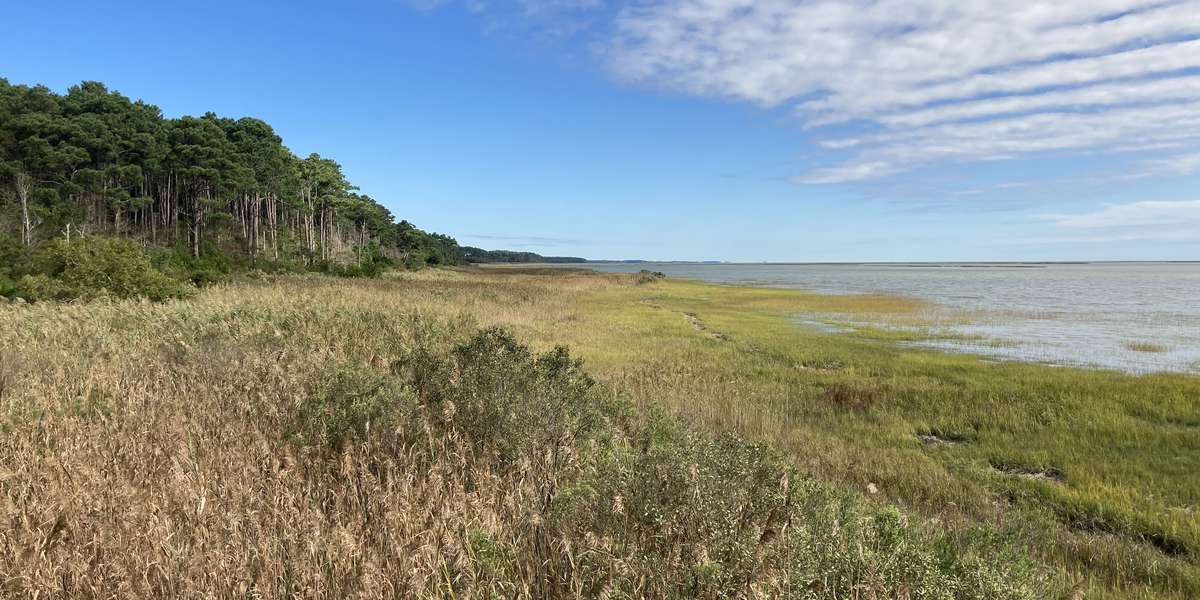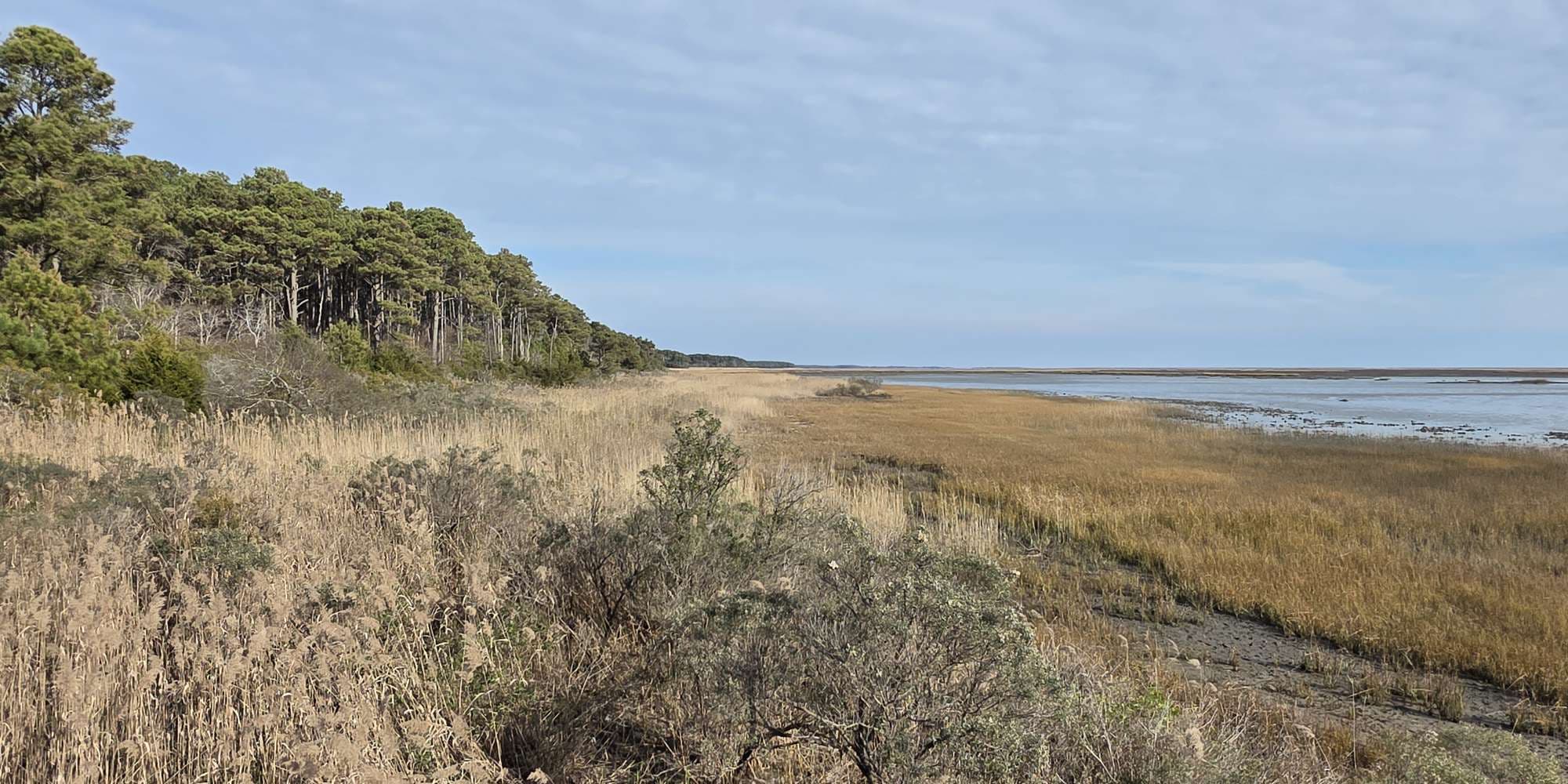2022
2023
2024
2025



2022
2023
2024
2025
Seaside Trail - Edward S. Brinkley Preserve, Cape Charles, VA
Managed by Virginia Coast Reserve LTER
Since 2021
In Virginia, US
VCR104
This chronolog combines 282 photos from 178 contributors. Learn more
About this site
Can you see the different types of plants in front of you? Have you ever wondered why they grow in distinct rows or sections parallel to the water? Zones of plants are determined by elevation and specific plant tolerances. Some plants thrive in salty water, others need drier soils. Higher elevations, like those on the left side of the photo receive less salt water at high tide, allowing for different plants to live in that area. The plants on the right side of the photo enjoy the lower elevations which bring in salt water and more nutrients. As sea-level rises, we expect each of these plant zones to move closer to the forest seeking their favorable conditions. Your photo submission will help us answer how this salt marsh, its plants, and the landscape are changing over time. Thank you for contributing to our time-lapse in partnership with the Virginia Coast Reserve Long-Term Ecological Research Program , the University of Virginia's Coastal Research Center, and The Nature Conservancy's Virginia Coast Reserve Chapter.
About Virginia Coast Reserve LTER
How do slow, progressive environmental changes (such as sea level rise) interact with brief disturbances (including intense waves and storms) to shape our seaside landscape? We are trying to find out!
Since the mid 1980s, scientists from over half a dozen universities have worked together through the Virginia Coast Resever (VCR) Long Term Ecological Research (LTER) program to better understand barrier islands, coastal forests, salt marshes, oyster reefs, and seagrass meadows.
Our goal is to not only UNDERSTAND how coastal systems work, but also to PREDICT how they may function or change in the future due to a changing climate, sea level rise, and land usage. We also connect any of those changes to the ecological and economic services the coastal barrier island system provides to you (such as storm protection, flood control, fisheries habitat, tourism).
Beyond VA's coast, we are connected to a national network of LTER sites, studying and comparing environments all over world.
For nature-lovers
Explore chronologs
For organizations
Chronolog is a monitoring tool for parks, nature centers, wildlife organizations, schools, and museums worldwide. With over 100,000 contributors across 300 organizations, Chronolog is on a mission to engage communities with nature while recording important natural changes.
© Chronolog 2026 | Terms